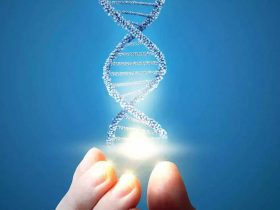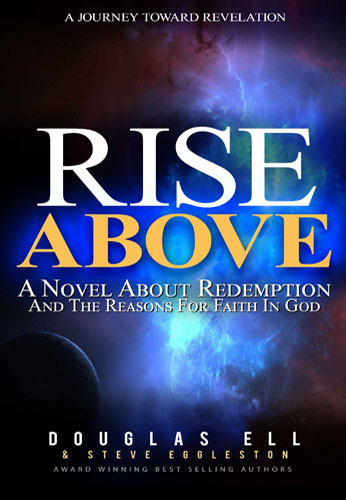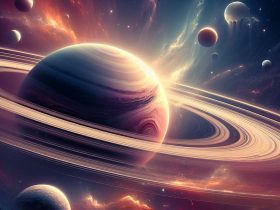In 2014, the Wall Street Journal published an opinion piece by Eric Metaxas, titled “Science Increasingly Points to God.” It received almost 400,000 “likes” on Facebook. Others challenged Metaxas’s arguments that Earth is special, and that the universe is fine-tuned for life. But those disturbed by a scientific challenge to atheism face a greater problem. New discoveries in biology, mostly in the last decade, make an even stronger case for the existence of God.
These new discoveries contradict Darwin’s theory of unguided evolution, that you can explain the origin of every species, and all of the wondrous systems and abilities of those species, by random mutations and the gradual process of natural selection. To be sure, many Darwinists are prepared to fight to the death, and they have circled the wagons, both by proclaiming ever louder that “all the evidence” supports their theory, and by attacking colleagues who dissent. But the cracks are beginning to show. Noted atheist philosopher Thomas Nagel subtitled his 2012 book “Why the Materialist Neo-Darwinian Conception of Nature Is Almost Certainly False.”
“Orphan genes” may be the most stunning contradiction. A gene is a section of DNA coding that life uses to build a functional protein, a biological machine part. Orphan genes, and their associated proteins, have no recognizable ancestors. They have now been found in every species on Earth. They typically make up 10-20% of a genome, and play a key role in making that species unique, such as creating toxins in jellyfish or preventing freezing in polar cod. Leaf-cutter ants have 9,361 unique proteins; next to human beings they create the largest and most complex societies.
You don’t need a PhD in mathematics or biology to realize that coding is information, and that you can’t get information by chance. Put together 100 English letters/spaces/punctuation selected at random, and ask what the odds are that you will get anything meaningful. Sure, there are billions times billions of possible coherent sequences, but the probability of getting a meaningful sequence by chance is less than one in a number with 100 zeros. You have a better chance of picking a marked marble out of a pile as big as the known universe.
The same reasoning applies to biology. DNA coding is processed by biological 3D printers that read the code three “letters” at a time, and use that information to select, snap together, and fold specified sequences of amino acids to build proteins, the machine parts of life. There are about 500 different types of amino acids, but all life uses an alphabet of the same 20 amino acids to build proteins. Functional proteins are astonishingly rare. If you randomly link together 150 of the amino acids of life, the odds that they will form a functional protein of any type are about 1 in a number with 74 zeros. You have a better chance of reaching into a pile of marbles as big as our galaxy and picking out that marked marble.
You might think that, over “billions and billions” of years, those odds could be overcome. But the math doesn’t work. The number of living organisms that have ever existed has about 40 digits. Even with that many tries your odds of picking that marked marble are about one in a number with 34 (74 minus 40) zeros, about the probability of reaching into a pile of marbles as big as the Sun and picking out the right one. Mutations at random can’t realistically “find” a new functional protein. And this greatly oversimplifies the problem; you need multiple proteins working together exactly right to create new technology.
If I had to give a single date for the death of Darwinian theory I would pick September 6, 2012. On that date newspapers around the world reported that most “and likely all” of human DNA serves a purpose. This was announced by the ENCODE project, a world-wide coalition of 440 top scientists. Three months later ENCODE reported human DNA contains more than one layer of information. Yes, we have 3.2 billion letters of coding with two layers of information. Despite attacks by Darwinists, the ENCODE scientists have stood their ground.
These findings contradict Darwin’s theory. There is no way that fully functional, or almost fully functional, DNA with two layers of information could have been created by chance. Darwinists try to argue that excess DNA makes an organism less likely to survive and reproduce, and so by the magical “power” of natural selection we end up with an efficient code. Sorry, but there is no evidence for that, and there are many organisms with dozens of times as much DNA as a human being. And even that fantasy can’t explain two layers of information.
Here’s a third new realization. Contrary to what you may have read, there is no mildly plausible non-theistic explanation for the origin of life. In 2006 Harvard launched an “Origins of Life Initiative,” but the consensus of their 2009 conference was “we just don’t know.” The problem is that, as we learn more about life and how it works, the complexity is too much to say it just arose by chance. We now know all life works off the same digital operating system. Digital technology has transformed our world – smartphones, computers, and more. Life began with digital technology. Today we have printers that build 3-dimensional objects. Life began with 3D printers. And here’s the clincher – life began with the exact correct digital code so that those 3D printers could build copies of themselves and all of the other machinery of life. This cannot be explained by chance, the resources of a trillion trillion universes would be laughingly inadequate.
The way it all works is highly optimized, such as in the chemical structure of DNA and in the selection of the particular 20 amino acids used to build proteins. This operating system was there at the beginning, it didn’t “evolve,” and there is no known way one operating system can transform into another. You can kick your windows PC all you want; it won’t turn into an iMac.
We have found information in orphan genes, human DNA, and the origin of life. We know, from all of science and all of human history, that only intelligence can create information. The new evidence points to – actually, demands the existence of – a transcendent intelligence, an intelligence that has created every species on Earth. Chance, you say? Get real.
Thanks for reading,
Doug Ell


















Leave a Reply